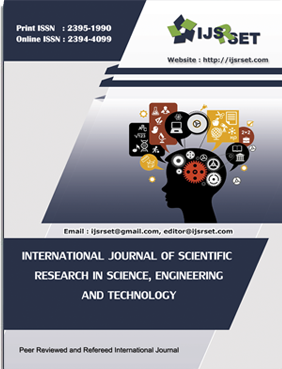Evolution of Vehicles : Analyzing Security Vulnerabilities in Modern Automotive Technologies
DOI:
https://doi.org/10.32628/IJSRSET24116175Keywords:
Security, Threats, Vulnerabilities, RFID, Multi-Factor AuthenticationAbstract
The evolution of vehicles has been a tribute to innovation of human ingenuity and brilliance. From simple carts to sophisticated electric and self-driving vehicles, evolutions of vehicles have been mirroring the technological advancements and cultural shifts of each era. The first vehicle was invented in the late 19th century, and ever since then the vehicles have been gracefully evolved. With the development of the vehicles their usage also increased many folds. From the means of daily transport, vehicles started symbolizing a status of luxury, and with this development came the usage of technologies that drives the features of a vehicle. Our paper explores and dwells into the security vulnerabilities related to the modern era vehicles, as the technology today can, on one hand ensure the novelties in the modern era and on the hand can prove to be an evil tool in the hands of notorious criminals.
📊 Article Downloads
References
Aleesha Susan Jacob, Vandita Chaurasiya , “Car Surveillance security system”. IEEE, 2017.
Dr. Pramod Sharma, Akash Shrivastav, et all. “Smart Security System for Vehicles”, International Journal of Advanced Research in Computer and Communication Engineering, Vol. 8, Issue 4, April 2019 DOI: https://doi.org/10.17148/IJARCCE.2019.8446
Li X., Peng J., et al, “Vehicle Anti Theft System Based on ARM and GPS. IEEE International Conference on Robotics and Automation (ICRA), 2018.
S Kumar Reddy Mallidi, “IoT Based Smart Vehicle Monitoring system”, International Journal of Advanced Research in Computer Science, 2018
Paulinus Chinaenye Eze, Patience Nkiruka Achebe, “Anti-Theft System for Car Security using RFID”, International Journal of Science and Management Studies (IJSMS), 2018
S. M. S. Ahmad, B. M. Ali, and W. A. W. Adnan, ―Technical Issues and Challenges of Biometric Applications as Access Control Tools of Information Security,‖ International Journal of Innovative Computing, Information and Control, Vol. 8, No. 11, 2012
Sundus Nairouz, Roqaya Dashti, “Vehicle Anti-Theft Security system with GPS Tracking and Remote Engine Locking”, IEEE, 5th International Conference on Bio-Engimeering for Sart Technologies, 2023. DOI: https://doi.org/10.1109/BioSMART58455.2023.10162051
Downloads
Published
Issue
Section
License
Copyright (c) 2024 International Journal of Scientific Research in Science, Engineering and Technology

This work is licensed under a Creative Commons Attribution 4.0 International License.




